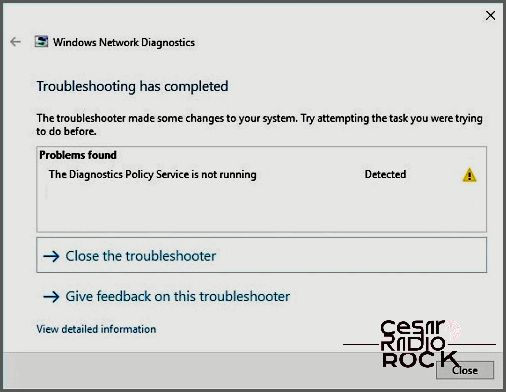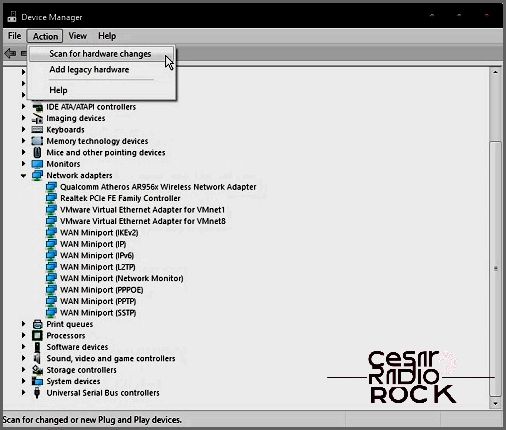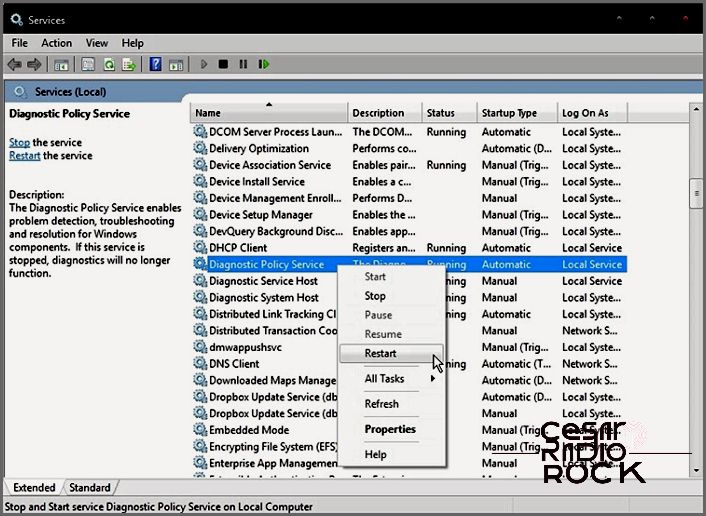Uh oh! The Diagnostics Policy Service isn’t working. Here’s what you can do.
Hey there! So, it looks like we’ve got a bit of a problem with the Diagnostics Policy Service. Don’t worry though, I’ve got your back. I’m going to walk you through what you can do to get it back up and running smoothly.
First things first, let’s make sure we’re on the same page about what the Diagnostics Policy Service actually does. Essentially, it’s responsible for troubleshooting and fixing issues with your network connection. So when it’s not running, you might notice some problems with your internet or network. Not fun, I know.
Alright, let’s jump into the troubleshooting part. I promise, it’s not as scary as it sounds.
Step 1: Restart the Service
Sometimes, a simple restart is all it takes to fix the issue. Here’s how you do it:
1. Press the Windows key + R on your keyboard to open the Run dialog box.
2. Type in “services.msc” (without the quotes) and hit Enter. This will open the Services window.
3. Look for “Diagnostics Policy Service” in the list of services.
4. Right-click on it and select “Restart”.
5. Wait for a moment and see if the service starts running again.
If that did the trick, great job! You can go back to enjoying your internet connection. But if not, don’t worry, we’ve got more options.
Step 2: Check Dependencies
Sometimes, the Diagnostics Policy Service relies on other services to function properly. So if one of those dependencies isn’t running, it can cause the whole thing to go haywire. Here’s how you can check if that’s the case:
1. Go back to the Services window (remember, Windows key + R, then type in “services.msc”).
2. Look for the “Diagnostics Policy Service” again and right-click on it.
3. This time, select “Properties” from the dropdown menu.
4. In the Properties window, go to the “Dependencies” tab.
5. Take a look at the list of services. If any of them are marked as “Stopped”, you’ll need to start them up again.
6. To start a service, simply right-click on it and select “Start”.
Once you’ve made sure all the dependencies are up and running, see if the Diagnostics Policy Service has started as well. If not, no worries, we’ve still got a couple more tricks up our sleeve.
Step 3: Use Command Prompt
We’re going to take things up a notch and use Command Prompt to manually start the service. Don’t worry, you don’t need to be a tech whiz for this. Just follow these steps:
1. Press the Windows key and search for “Command Prompt”.
2. Right-click on the Command Prompt app and select “Run as administrator”.
3. In the Command Prompt window, type in the following command: “net start DPS” (without the quotes) and hit Enter.
4. If everything went smoothly, you should see a message saying that the Diagnostics Policy Service has been started.
Phew, you made it through! Hopefully, one of these troubleshooting steps did the trick and the Diagnostics Policy Service is back in action. If not, don’t hesitate to reach out for further assistance.
Keep on rocking that internet connection!

Oh boy, Windows sure has a knack for throwing us some curveballs! I mean, it feels like I’ve been dealing with blue screen crashes and pop-up errors for what, decades now? It’s like a never-ending cycle of troubleshooting, diagnosing, and desperately scouring forums for answers. You’d think that with all the new versions of Microsoft’s operating system, some of these pesky errors would have disappeared. But no, they just keep on lingering. Ugh.
Now, don’t get me wrong, Windows 10 has its fair share of success stories. But let’s be real here, it still has its vulnerabilities and inconsistencies, unlike those cool Linux-based operating systems. And that’s why it’s even more frustrating when the Diagnostic Policy Service decides to take a nap.
So, what exactly is this Diagnostic Policy Service, you ask? Well, it’s the super important service that helps your operating system detect problems and handle all that troubleshooting jazz. Without it, you’re left stranded, with no way to diagnose issues with your software or hardware.
And guess what? This infuriating problem likes to rear its ugly head when your computer’s network connectivity is as limited as my patience during traffic jams. See, the Diagnostic Policy Service relies on a connection to work its magic, so you can imagine how aggravating it is when this error pops up on your screen, taunting you.

So, what can you do to fix this problem? Well, there are three different approaches that you can take, and they work no matter if you’re using Windows 7, 8.1, or 10.
Reinstall Your Network Adapters
When you’re dealing with Diagnostics Policy Service errors, it’s often due to malfunctioning network adapters. It may seem a bit extreme, but reinstalling your network adapters is almost guaranteed to resolve any issues with this service.
Here’s how you can do it:
1. Press the Windows logo and the letter ‘R’ at the same time to open the Run command.
2. Type ‘devmgmt.msc’ and hit Enter. This will allow you to access Device Manager.
3. Look for ‘Network Adapters’ and open it.
4. If you have more than one network adapter, uninstall all of them.
5. On the Device Manager toolbar, select ‘Action’.
6. Click on the first option, which is ‘Scan for hardware changes’.
7. Finally, run Network Diagnostics to check if the errors are recurring.

Once you’ve completed the task at hand, it’s important to manually reinstall the drivers for your network adapter. Make sure you install either the latest version of the drivers or the version that is compatible with your current operating system.
Administrator Privilege
If the service you’re dealing with doesn’t have the proper access rights, chances are it won’t function correctly and you’ll encounter errors. One thing you can try is giving the service administrator privilege to see if it changes its behavior.
Here’s how you can do it:
1. Open the Run command
2. Type “cmd”
3. Right-click to run the program as an administrator
4. Type “net localgroup Administrators /add networkservice”
5. Press Enter
6. Type “net localgroup Administrators /add localservice”
7. Press Enter
8. Run Network Diagnostics to check for any remaining errors
Perform a Services Check
This final method is typically the first one you should try. However, it can be a time-consuming process if you’re not sure where exactly to look. Additionally, it may not always be successful, especially if there are issues with the drivers, such as compatibility problems with your operating system version.

Let’s get started by opening the Run command.
First, I want you to open the Services window by typing “services.msc” into the Run command.
Once the Services window is open, we need to find the Diagnostics Policy Service.
Now, right click on the Diagnostics Policy Service and select Start.
If the Start button is disabled and grayed out, click on Restart instead.
Let’s right click on the service again, and this time select Properties.
In the Properties window, we need to change the Startup type to automatic.
Once you’ve made the change, click on Apply settings and then click OK.
Now, it’s time to run Network Diagnostics to see if there are any improvements.
Discovering Drivers with Driver Detection Software
When it comes to finding the right drivers for your hardware devices in Windows, there are plenty of third-party software options available. These programs are specifically designed to detect the devices in your system and search for the appropriate drivers. However, they usually come with a price tag. But by investing in a reputable driver detection software, you can potentially solve various issues.
Gone are the days of manually checking for drivers. With the click of a button, you can task the software to scan and locate any outdated or missing drivers. You even have the option to automatically repair or install the drivers. The best part is that these programs are user-friendly and offer more than just fixing service or driver errors. Plus, not all of them are expensive.
It is worth mentioning that these software tools require an internet connection. So, if you prefer to keep your computer offline or don’t currently have a valid connection, third-party software won’t be able to help you with any driver bugs or errors.
A Final Consideration
Fortunately, resolving Windows errors related to the Diagnostics Policy Service can be done offline. As long as you have a legitimate copy of Windows and the issues aren’t caused by faulty or missing updates, you can easily tackle Diagnostics Policy Service errors.
The best part is that each of the manual methods provided below is simple to follow and only requires you to be logged into an account with administrator privileges. In fact, most of the time you can resolve the problem without resorting to extreme measures like rolling back your Windows system. Of course, it’s important to regularly create backups to avoid any potential data loss.

